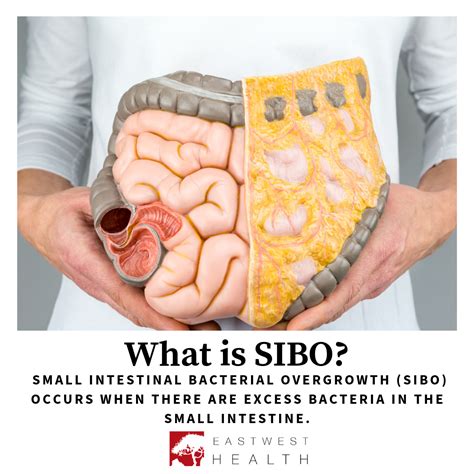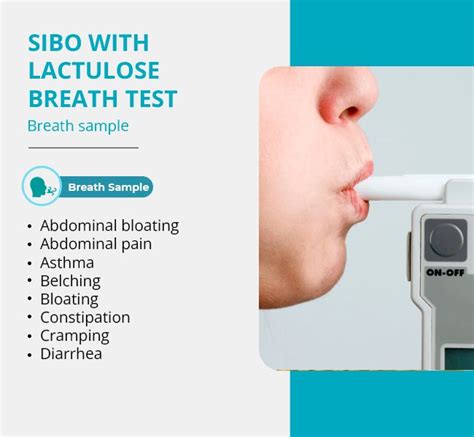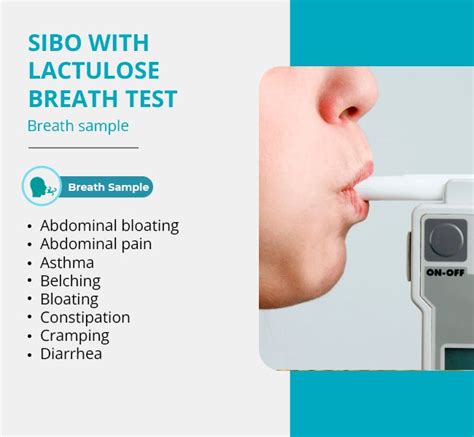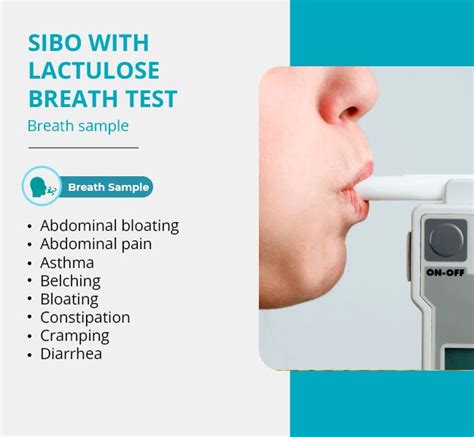Preparing for the Lactulose SIBO Breath Test: A Step-by-Step Guide
Learn how to properly prepare for the lactulose SIBO breath test with this step-by-step guide, ensuring accurate results and effective diagnosis of small intestinal bacterial overgrowth.

Are you experiencing symptoms like bloating, gas, and abdominal pain? These could be signs of small intestine bacterial overgrowth (SIBO). Luckily, there is a simple test called the lactulose SIBO breath test that can help diagnose this condition. In this step-by-step guide, we will walk you through the process of preparing for the test to ensure accurate results.
Step 1: Consult with Your Healthcare Provider
Before starting the lactulose SIBO breath test, it is important to consult with your healthcare provider. They will evaluate your symptoms, medical history, and determine if this test is appropriate for you. Additionally, they may provide specific instructions or restrictions based on your individual circumstances.
Step 2: Discontinue Certain Medications and Supplements
Several medications and supplements can interfere with the accuracy of the lactulose SIBO breath test. It is crucial to inform your healthcare provider about all the medications and supplements you are currently taking. They may advise you to discontinue certain drugs or supplements for a specified period of time before the test.
Step 3: Follow the Recommended Diet
Prior to the lactulose SIBO breath test, you will be instructed to follow a specific diet for a certain number of days. This diet typically restricts certain foods that can contribute to bacterial overgrowth. It is essential to strictly adhere to this diet to ensure accurate test results. Your healthcare provider will provide you with detailed instructions on what to eat and what to avoid.
Step 4: Fast Overnight
On the day of the test, you will be required to fast for a specific period of time, usually overnight. Fasting helps ensure that the test results are not affected by recent food intake. Your healthcare provider will inform you about the duration of the fasting period. Remember to drink only water during this time.
Step 5: Take the Lactulose Solution
Once you arrive at the testing facility, you will be given a lactulose solution to drink. Lactulose is a sugar that is not absorbed by the body but is instead fermented by bacteria in the small intestine. As the bacteria break down lactulose, they produce hydrogen and methane gases, which can be detected in your breath.
Step 6: Collect Breath Samples
After consuming the lactulose solution, you will need to blow into a small handheld device at specified intervals. This device will collect breath samples, which will be analyzed by the healthcare provider to measure the levels of hydrogen and methane gases. The test usually lasts for a few hours, during which you will be required to provide multiple breath samples.
Step 7: Discuss the Results with Your Healthcare Provider
Once the lactulose SIBO breath test is complete, your healthcare provider will interpret the results and discuss them with you. They will determine if your breath test indicates the presence of SIBO and recommend appropriate treatment options if necessary. It is important to follow up with your healthcare provider to fully understand the results and develop a treatment plan.
By following these step-by-step guidelines, you can effectively prepare for the lactulose SIBO breath test and ensure accurate results. Remember to consult with your healthcare provider for personalized instructions and advice throughout the testing process.
Understanding SIBO
SIBO (Small Intestinal Bacterial Overgrowth) is a condition characterized by an overgrowth of bacteria in the small intestine. Normally, the small intestine contains a relatively low number of bacteria compared to the large intestine. However, in individuals with SIBO, bacteria from the large intestine migrate and overpopulate the small intestine.
It is important to note that SIBO is different from the normal presence of bacteria in the large intestine. In SIBO, these bacteria are in the wrong place and can cause a range of symptoms and health issues.
When the bacteria in the small intestine ferment carbohydrates and other nutrients, they produce gases such as hydrogen and methane. These gases can lead to various symptoms such as bloating, abdominal pain, diarrhea, constipation, and flatulence.
SIBO can be categorized into two types:
- Hydrogen-dominant SIBO: In this type, the excess bacteria produce hydrogen gas.
- Methane-dominant SIBO: In this type, the excess bacteria produce methane gas.
SIBO can cause a range of health issues and is often associated with conditions such as irritable bowel syndrome (IBS), inflammatory bowel disease (IBD), fibromyalgia, chronic fatigue syndrome, and celiac disease.
Some of the risk factors for developing SIBO include underlying digestive disorders, anatomical abnormalities, poor immune function, and prolonged use of antibiotics.
Diagnosing SIBO is important to determine the appropriate treatment plan. The lactulose SIBO breath test is a commonly used diagnostic tool that can accurately identify SIBO and determine the type of gas produced. This test involves consuming a sugar solution and measuring the levels of hydrogen and methane gases in the breath over a specific period of time.
Understanding SIBO and its implications is crucial for individuals experiencing symptoms related to gastrointestinal health. Proper diagnosis and treatment can help manage and improve symptoms and overall quality of life.
What is SIBO?
SIBO stands for Small Intestinal Bacterial Overgrowth. It is a condition where there is an excessive growth of bacteria in the small intestine. Normally, the small intestine has a relatively low bacterial count, but in SIBO, the bacteria usually found in the colon can migrate and multiply in the small intestine, causing various digestive symptoms and other related health issues.
The overgrowth of bacteria in the small intestine can disrupt the digestion and absorption of nutrients, leading to malnutrition and a range of symptoms. These symptoms often include bloating, gas, abdominal pain, diarrhea, constipation, and fatigue. SIBO can also be associated with other conditions such as irritable bowel syndrome (IBS), leaky gut syndrome, and autoimmune diseases.
There are different types of bacteria that can cause SIBO, and in some cases, these bacteria may produce excessive amounts of methane or hydrogen gas. These gases can contribute to the symptoms experienced by individuals with SIBO.
SIBO is diagnosed through various tests, including the lactulose SIBO breath test. This test measures the levels of hydrogen and methane gas in the breath after consuming a solution of lactulose, a type of sugar that is not easily absorbed by humans but can be fermented by bacteria in the small intestine.
| Advantages of the lactulose SIBO breath test: | 1. Non-invasive and safe | 2. Can be done at home | 3. Provides valuable information about the presence and severity of SIBO |
| Disadvantages of the lactulose SIBO breath test: | 1. Requires preparation and adherence to pre-test instructions | 2. May produce uncomfortable symptoms during the test, such as bloating or gas | 3. Results may vary depending on individual factors and the presence of other gastrointestinal conditions |
In conclusion, SIBO is a condition characterized by an overgrowth of bacteria in the small intestine, leading to digestive symptoms and other related health issues. The lactulose SIBO breath test is a non-invasive and safe method for diagnosing SIBO and provides valuable information about the presence and severity of the condition.
Symptoms of SIBO
SIBO, or Small Intestinal Bacterial Overgrowth, occurs when there is an abnormal increase in the number of bacteria in the small intestine. This can lead to a variety of symptoms that can significantly impact a person's quality of life.
Some common symptoms of SIBO include:
1. Abdominal pain and bloating: One of the most common symptoms of SIBO is abdominal pain and bloating. This can be characterized by a feeling of fullness or discomfort in the abdominal area.
2. Diarrhea: SIBO can lead to diarrhea, which is often watery and may contain mucus. This can result in frequent bowel movements and loose stools.
3. Constipation: On the other hand, SIBO can also cause constipation. This can make it difficult to have regular bowel movements and may result in hard, dry stools.
4. Gas and flatulence: SIBO can lead to excessive gas production in the intestines, resulting in increased flatulence. This can cause embarrassment and discomfort for those affected by the condition.
5. Abdominal cramps: SIBO can cause abdominal cramps and discomfort, which may range from mild to severe. These cramps can be intermittent or constant.
6. Nausea and vomiting: Some individuals with SIBO may experience nausea and may even vomit. This can be particularly bothersome and can affect overall appetite and nutrition.
7. Unexplained weight loss: In some cases, SIBO can lead to unintentional weight loss. This can occur due to malabsorption of nutrients or changes in the metabolism caused by the overgrowth of bacteria.
8. Fatigue and weakness: SIBO can also cause fatigue and weakness due to the impact it has on digestion and nutrient absorption. Individuals may feel tired and depleted of energy.
9. Joint pain: Joint pain and inflammation can sometimes be present in individuals with SIBO. This can be due to the systemic effects of the bacterial overgrowth.
10. Skin problems: SIBO is sometimes associated with skin problems such as acne, rosacea, or eczema. This is believed to be related to the impact of gut health on overall systemic inflammation.
If you are experiencing any of these symptoms, it is important to consult with your healthcare provider to determine the underlying cause and to discuss possible treatment options.
How to Prepare for the Lactulose SIBO Breath Test
The Lactulose SIBO Breath Test is an important diagnostic tool to determine if you have Small Intestinal Bacterial Overgrowth (SIBO). It is crucial to properly prepare for the test in order to obtain accurate results. Here is a step-by-step guide on how to prepare for the test:
- Consult your Doctor: Before scheduling the Lactulose SIBO Breath Test, it is essential to consult your doctor. They will evaluate your symptoms and medical history to determine if the test is necessary for you.
- Talk to your Doctor about Medications: Inform your doctor about any medications, supplements, or herbal remedies you are currently taking. Certain medications can interfere with the test results, so your doctor may ask you to temporarily stop taking them before the test.
- Follow Pre-Test Instructions: Your doctor or the testing facility will provide you with specific instructions to follow before the test. These instructions may include dietary restrictions or modifications, such as avoiding certain foods, beverages, or medications that may affect the test results. It is crucial to strictly follow these instructions to ensure accurate results.
During the preparation phase, it is important to maintain a healthy and balanced diet. Avoid excessive consumption of fiber-rich foods, sugary substances, and alcohol, as they can potentially affect the test results. Make sure to drink plenty of water to stay hydrated.
Remember to inform your doctor if you have any allergies or medical conditions that may impact the test procedure or results.
By properly preparing for the Lactulose SIBO Breath Test, you increase the likelihood of getting accurate results. This will ultimately assist your doctor in identifying and managing your SIBO symptoms effectively.
7. Consult your Doctor
Before undergoing the Lactulose SIBO Breath Test, it is important to consult with your doctor. They will be able to provide guidance and determine if the test is appropriate for you based on your medical history and symptoms.
Your doctor can also help you understand the purpose of the test and how the results will be used to inform your treatment plan. They may want to discuss any current medications you are taking and whether or not you should adjust your dosage or temporarily discontinue use prior to the test.
During your consultation, be sure to ask any questions or express any concerns you may have about the procedure. Your doctor is there to provide you with the necessary information and support to ensure the test is conducted properly and accurately.
Additionally, your doctor may recommend specific dietary restrictions leading up to the test. It is important to follow these instructions to ensure accurate results.
Remember, your doctor is the best resource for guidance and information regarding the Lactulose SIBO Breath Test. By consulting with them, you can ensure that you are properly prepared and have a clear understanding of the process.
Talk to your Doctor about Medications
Before taking the Lactulose SIBO Breath Test, it is important to consult with your doctor regarding any medications you may be taking. Certain medications can interfere with the accuracy of the test results, so it is crucial to inform your doctor about any prescriptions, over-the-counter drugs, or supplements you are currently using.
Your doctor will be able to advise you on which medications you should continue taking and which ones you should temporarily discontinue before the test. It is essential to follow their instructions closely to ensure accurate and reliable results.
Additionally, make sure to inform your doctor about any recent antibiotic use, as this can also affect the test results. Antibiotics can alter the composition of the bacteria in your gut, potentially leading to false-negative results. Your doctor may recommend waiting a certain period after completing your antibiotic treatment before taking the SIBO breath test.
The medications you take can have a significant impact on the results of the Lactulose SIBO Breath Test. Therefore, it is crucial to have an open and honest conversation with your doctor to ensure that the test is performed under the best possible conditions.
Follow Pre-Test Instructions
Before taking the lactulose SIBO breath test, it is crucial to follow certain pre-test instructions to ensure accurate results. Here are the steps you should take:
| Step 1: | Notify your healthcare provider about any medications or supplements you are currently taking. Some medications can interfere with the test results, so your doctor may ask you to stop taking certain medications before the test. |
| Step 2: | Avoid consuming any food or drink for at least 12 hours before the test. This includes solid foods, liquids, and chewing gum. Fasting is necessary to ensure accurate results. |
| Step 3: | Avoid smoking and vigorous exercise for at least 12 hours before the test. These activities can affect the production of gases in your intestines and may influence the test results. |
| Step 4: | Refrain from taking any antibiotics for at least two weeks before the test. Antibiotics can alter the bacterial balance in your gut, which may affect the test results. |
| Step 5: | Let your doctor know if you have any medical conditions or if you are pregnant. Certain health conditions and pregnancy can impact the interpretation of the test results, so it's essential to inform your healthcare provider about them. |
| Step 6: | Arrive at the testing facility on time and be prepared to provide a breath sample. The lactulose SIBO breath test requires you to blow into a collection device at specific intervals to measure the levels of hydrogen and methane gases in your breath. |
By following these pre-test instructions carefully, you can ensure accurate and reliable results from your lactulose SIBO breath test. Remember to consult your healthcare provider if you have any concerns or questions about the test or its preparation.
11. How to Interpret the Lactulose SIBO Breath Test Results
Once you have completed the Lactulose SIBO Breath Test, you will need to interpret the results to understand if you have Small Intestinal Bacterial Overgrowth (SIBO) or not. The results of the test will be analyzed by a healthcare professional, usually a gastroenterologist or a functional medicine practitioner.
- Normal results: If both hydrogen and methane gas levels remain low throughout the test, it indicates that there is no SIBO present in your small intestine.
- Positive results for hydrogen: If the levels of hydrogen gas rise significantly during the test, it indicates the presence of SIBO caused by hydrogen-producing bacteria in the small intestine.
- Positive results for methane: If the levels of methane gas rise significantly during the test, it indicates the presence of SIBO caused by methane-producing bacteria in the small intestine.
- Positive results for both hydrogen and methane: If both hydrogen and methane gas levels rise significantly during the test, it indicates the presence of SIBO caused by a combination of hydrogen-producing and methane-producing bacteria in the small intestine.
It is important to note that a positive test result does not necessarily mean you have symptoms of SIBO. Symptoms can vary from person to person, and some individuals may have SIBO without experiencing any noticeable symptoms. Additionally, the severity of symptoms may not always correlate with the levels of gas present in the breath test.
If your test results indicate the presence of SIBO, your doctor or healthcare provider will work with you to develop a treatment plan. This may involve dietary modifications, probiotics, antibiotics, or other interventions to help reduce the overgrowth of bacteria in the small intestine and alleviate symptoms.
If you have any questions or concerns about your test results, be sure to discuss them with your healthcare provider. They will be able to provide you with further information and guidance based on your specific situation.
11. Interpreting the Results of the Lactulose SIBO Breath Test
Once you have completed the Lactulose SIBO breath test, it is important to understand how to interpret the results. The test measures the presence of hydrogen and methane gas in your breath, which can indicate an overgrowth of bacteria in the small intestine.
Here are some key points to consider when interpreting the results:
- If there is a significant increase in hydrogen levels compared to the baseline, it may indicate the presence of hydrogen-dominant SIBO.
- If there is a significant increase in methane levels compared to the baseline, it may indicate the presence of methane-dominant SIBO.
- If there is an increase in both hydrogen and methane levels, it may indicate the presence of a mixed-type SIBO.
- The timing of the rise in gas levels can also provide additional information. An early peak in hydrogen levels (within the first 90 minutes) may suggest an overgrowth in the upper small intestine, while a later peak (between 90-120 minutes) may suggest an overgrowth in the lower small intestine.
It is important to note that the interpretation of the results should be done in consultation with a healthcare provider who specializes in SIBO. They will take into account your symptoms, medical history, and other diagnostic tests to provide an accurate diagnosis.
If the test results indicate the presence of SIBO, your healthcare provider will work with you to develop a treatment plan. This may include dietary changes, antimicrobial therapy, and addressing any underlying conditions that may be contributing to the overgrowth of bacteria.
Regular monitoring and follow-up testing may be necessary to evaluate the effectiveness of the treatment and ensure that the SIBO has been eradicated.
Some important questions about Preparing for the Lactulose SIBO Breath Test - A Step-by-Step Guide:
What is a lactulose SIBO breath test?
The lactulose SIBO breath test is a diagnostic test used to detect Small Intestinal Bacterial Overgrowth (SIBO). It involves drinking a solution of lactulose, a type of sugar that is not absorbed by the body, and measuring the levels of hydrogen and methane gases that are produced by bacteria in the small intestine.
How do I prepare for a lactulose SIBO breath test?
Preparing for a lactulose SIBO breath test typically involves following a special diet for 24-48 hours before the test. This diet usually restricts certain carbohydrates that can feed bacteria in the small intestine. In addition to the diet, you may also need to avoid certain medications and supplements, as well as fasting for a period of time before the test.
Why do I need to follow a special diet before the lactulose SIBO breath test?
Following a special diet before the lactulose SIBO breath test helps to reduce the amount of residual food in the small intestine, which can interfere with the accuracy of the test results. By restricting certain carbohydrates, you are essentially "starving" the bacteria in your small intestine, making it easier to detect an overgrowth of bacteria.
Can I take my regular medications and supplements before the lactulose SIBO breath test?
It is important to consult with your healthcare provider or the testing facility about which medications and supplements to avoid before the lactulose SIBO breath test. Some medications and supplements can affect the results of the test, so they may need to be temporarily discontinued or adjusted.
How long does the lactulose SIBO breath test take?
The lactulose SIBO breath test usually takes about 2-3 hours to complete. This includes the time it takes to drink the lactulose solution, wait for the gases to be produced, and collect breath samples at specific intervals. The actual testing time may vary depending on the specific protocol used by the testing facility.
What is the Lactulose SIBO breath test?
The Lactulose SIBO breath test is a diagnostic tool used to determine if a person has small intestinal bacterial overgrowth (SIBO). It involves drinking a solution containing lactulose, a type of sugar that is not easily absorbed by the body. If there is an overgrowth of bacteria in the small intestine, they will ferment the lactulose and produce gases like hydrogen and methane, which can be detected in the breath.

 mainadmin
mainadmin 

















